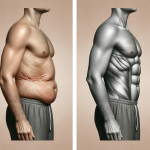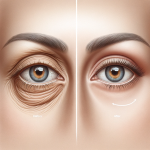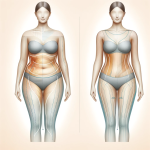
Rhinoplasty: Reshaping Perceptions and Profiles in Plastic Surgery
Rhinoplasty: Reshaping Perceptions and Profiles in Plastic Surgery
Rhinoplasty, commonly known as a nose job, stands as one of the most sought-after procedures in the realm of plastic surgery. This intricate and artful procedure goes beyond cosmetic enhancement; it’s a journey of transformation, reshaping not just the central feature of the face but also impacting self-perception and confidence. In this article, we dive into the fascinating world of rhinoplasty, exploring its nuances, the transformative impact it can have, and the blend of medical expertise and aesthetic vision required for successful outcomes.

Unveiling Rhinoplasty
Rhinoplasty is a surgical procedure aimed at altering the shape, size, or proportions of the nose. It can address a wide range of concerns, from aesthetic dissatisfaction to functional issues like breathing difficulties.
The Spectrum of Rhinoplasty: Cosmetic and Functional
There are two primary types of rhinoplasty:
- Cosmetic Rhinoplasty: Focused on enhancing the nose’s appearance, aligning it more harmoniously with other facial features.
- Functional Rhinoplasty: Aimed at correcting structural issues that impede breathing, such as a deviated septum.
The Rhinoplasty Procedure: A Delicate Art
Consultation
The first step involves a detailed consultation where the surgeon assesses the patient’s facial structure, discusses expectations, and plans the surgical approach.
Pre-Surgical Preparation
Patients may need to undergo specific tests, avoid certain medications, and prepare for the recovery period.
The Surgery
Rhinoplasty is typically performed under general anesthesia. The surgeon carefully reshapes the bone, cartilage, and soft tissue of the nose to achieve the desired result.
Recovery
Post-operative recovery includes managing swelling and bruising, with most patients returning to normal activities within a few weeks. The final shape of the nose may take up to a year to fully settle.
The Art and Science of Rhinoplasty
Rhinoplasty is a blend of surgical precision and artistic judgment. The surgeon must have a deep understanding of facial anatomy and aesthetics to ensure the new nose complements and enhances the patient’s overall appearance, maintaining or improving functionality.
Who is an Ideal Candidate for Rhinoplasty?
Ideal candidates are individuals who:
- Are physically healthy and have completed facial growth (usually 16 years or older).
- Have specific aesthetic or functional concerns about their nose.
- Possess realistic expectations about the outcome of the surgery.
The Impact of Rhinoplasty
- Aesthetic Enhancement: A well-proportioned nose can significantly enhance facial harmony.
- Boosted Self-Confidence: Many patients experience increased self-esteem post-surgery.
- Improved Breathing: For those with structural impediments, rhinoplasty can offer considerable relief.
Risks and Considerations
As with any surgical procedure, rhinoplasty carries risks like infection, bleeding, or the need for revision surgery. It’s essential to discuss these possibilities with your surgeon and understand the recovery process.
The Future of Rhinoplasty
Advancements in surgical techniques and technology continue to refine rhinoplasty outcomes, offering more precise and predictable results. Non-surgical options, like fillers, also provide temporary alterations for those seeking minor adjustments.
Conclusion
Rhinoplasty is more than just a cosmetic procedure; it’s a transformative journey that can have profound impacts on an individual’s appearance and self-perception. Whether for aesthetic enhancement or functional improvement, it requires careful consideration, expert surgical skill, and a clear understanding of the patient’s goals.
Key Takeaways
- Rhinoplasty is a surgical procedure to alter the nose’s shape, size, or proportions.
- It encompasses both cosmetic and functional objectives.
- The procedure requires a combination of surgical expertise and artistic insight.
- Ideal candidates should be in good health, have completed facial growth, and have realistic expectations.
- The surgery can enhance facial harmony, boost confidence, and improve breathing.
In the intricate dance of plastic surgery, rhinoplasty stands out as a profound expression of the power of change, not just in appearance, but in the very essence of how individuals perceive and present themselves to the world.







